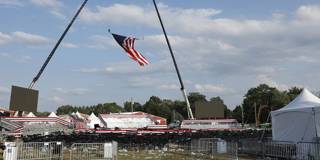
The Trump Shooting Reveals the Hallmarks of American Political Violence
As ugly as it may sound, the attempt to assassinate Donald Trump is somewhat normal, in the sense that it is consistent with a widespread pattern of recourse to brute force in American life. And a constant feature of American political violence is the vicious rhetorical battle that follows every incident.
WASHINGTON, DC – Europe is no stranger to political violence like the recent attempt on Donald Trump’s life at a campaign rally in Pennsylvania. More than 50 candidates and activists were physically assaulted during France’s recent parliamentary election – a painful reminder of a not-so-distant past when violence was part of the language of political discourse in several European countries.